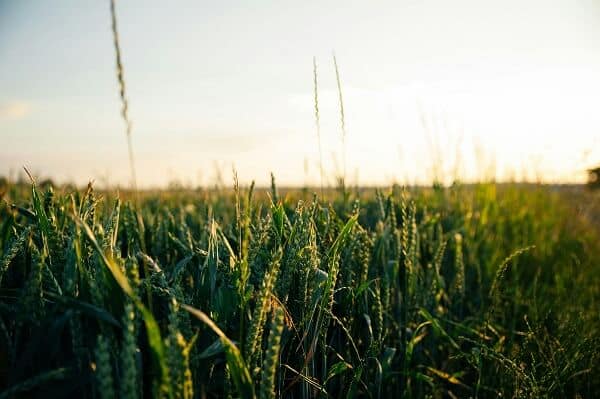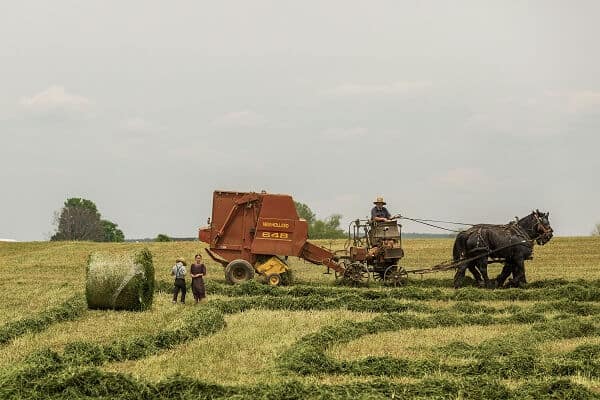
Climate change is creating serious challenges for farmers, threatening global food security through extreme weather, unpredictable growing seasons, and increasing water scarcity. This article focuses on adaption strategies for farmers and how they can adapt their practices to protect their crops and livelihoods amid these disruptions. We’ll discuss five key strategies that can help farmers mitigate climate change’s impact on agriculture: using climate-resilient crops, diversifying farming systems, improving water management, incorporating agroforestry, and utilizing early warning systems. These solutions can help ensure sustainable food production and resilience in the face of a rapidly changing climate.
Introduction: Facing the Growing Threat of Climate Change on Global Food Security
The climate change impact on agriculture is no longer a distant threat—it’s here, and farmers around the world are already feeling the effects. Extreme weather events like floods, droughts, and heatwaves are becoming more frequent, causing crops to fail and food supplies to shrink. As global temperatures rise, farmers face increasing challenges to grow enough food, making it harder to ensure food security for millions of people. With weather patterns becoming less predictable, the agricultural industry must adapt to survive.
To address this, adaption strategies for farmers are being developed and farmers are turning to innovative disaster management strategies to strengthen their resilience and safeguard food production. In this blog post, we will explore key ways farmers can adapt to climate change, improve food security, and reduce their vulnerability to the unpredictable forces of nature.
The Growing Impact of Climate Change on Food Security

Climate change is disrupting food systems in several ways, and it is one of the most significant challenges that the agricultural sector faces today. As global temperatures rise and weather patterns shift, the following impacts are becoming more evident:
- Extreme Weather Events: Farmers are increasingly dealing with hurricanes, floods, and droughts, which destroy crops and damage farmland. In 2020 alone, extreme weather events caused over $30 billion in damages to global agricultural systems.
- Rising Temperatures: Heat stress affects plant growth and reduces crop yields, particularly in regions that are already warm. Some crops, like wheat and rice, which are staples for billions of people, are especially vulnerable to even small temperature increases.
- Water Scarcity: Many regions are experiencing longer periods of drought due to changing rainfall patterns, making water scarcity a growing issue for farmers. Without reliable access to water, crop productivity declines, threatening food supplies.
- Shifts in Growing Seasons: The length of growing seasons and the timing of planting and harvest are changing. This unpredictability disrupts traditional farming schedules and can lead to crop failure.
These challenges make it clear that without adaptation, the global food system could face significant disruptions, leading to increased hunger, poverty, and even social unrest. Farmers, therefore, need to adopt new techniques and technologies to maintain their productivity and ensure that food remains available.
Adaptation Strategies for Farmers
While climate change presents serious risks, farmers are not without solutions. Various strategies, both traditional and modern, are being employed to help them cope with the changes. Below, we’ll explore six effective adaptation strategies that are helping farmers improve their resilience to climate change.
1. Climate-Resilient Crops

One of the most effective ways to adapt to climate change is by planting climate-resilient crops. These crops are bred to withstand extreme weather conditions, such as drought, flooding, and high temperatures. Scientists have developed new varieties of staple crops, such as drought-resistant maize or heat-tolerant rice, which can thrive in harsher conditions.
- Why It Matters: Climate-resilient crops ensure that even when weather conditions are unfavorable, farmers can still produce a decent yield. This not only stabilizes food production but also reduces the risk of food shortages.
- Example in Practice: In sub-Saharan Africa, where drought is a frequent challenge, farmers have begun planting drought-tolerant maize varieties. These crops have allowed farmers to increase their harvests despite increasingly unreliable rainfall.
2. Diversified Farming Systems

Implementing adaption strategies for farmers, by diversifying crops and livestock is another powerful strategy for improving resilience to climate change. Instead of relying on a single crop, farmers can plant a variety of crops and raise different types of livestock. This diversification spreads the risk, as different crops and animals may respond differently to extreme weather.
- Why It Matters: A diverse farming system means that if one crop fails due to a weather event, others may still thrive, ensuring a steady food supply and income for the farmer.
- Example in Practice: In India, farmers who previously relied solely on rice are now incorporating pulses, fruits, and vegetables into their farming systems. This not only boosts nutrition but also provides multiple income streams.
3. Improved Water Management Techniques
As water becomes increasingly scarce in many regions, effective water management is essential for maintaining food production. Farmers can adopt techniques like rainwater harvesting, drip irrigation, and mulching to conserve water and ensure that crops have enough moisture to grow.
- Why It Matters: Efficient water use helps farmers make the most of limited water supplies, allowing crops to survive during droughts and dry spells.
- Example in Practice: In parts of California, farmers are using drip irrigation, which delivers water directly to the plant’s roots, reducing water waste and maximizing efficiency. This has been crucial for maintaining production in a region prone to water shortages.
4. Agroforestry Practices

Agroforestry, the practice of integrating trees and shrubs into farming systems, provides a natural way to enhance resilience to climate change. Trees help protect crops from extreme heat and wind while also improving soil quality and reducing erosion.
- Why It Matters: Agroforestry creates a more stable microclimate for crops, helps sequester carbon, and increases biodiversity, all of which contribute to long-term sustainability and resilience.
- Example in Practice: In Kenya, farmers are planting trees like acacia and moringa alongside their crops. These trees provide shade for the crops, help retain soil moisture, and produce fruit and other products that can be sold or consumed.
5. Early Warning Systems and Disaster Preparedness
Farmers can also improve their resilience by using disaster management tools, such as early warning systems that provide timely information about upcoming weather events. With better forecasting, farmers can prepare for extreme weather, such as moving livestock to safer areas or harvesting crops early to avoid flood damage.
- Why It Matters: Early warning systems give farmers critical time to take action before disaster strikes, reducing losses and protecting livelihoods.
- Example in Practice: In Bangladesh, early warning systems for floods are being used to alert farmers about rising water levels. This allows them to move their livestock and secure their crops before flooding begins.
6. Knowledge Sharing and Capacity Building
Lastly, education and knowledge-sharing are crucial for helping farmers adapt to the challenges of climate change. Governments, NGOs, and agricultural organizations can provide farmers with the training and information they need to implement new techniques and technologies. Peer-to-peer learning and farmer cooperatives can also play a key role in spreading successful adaptation strategies.
- Why It Matters: Farmers equipped with the right knowledge are better prepared to make informed decisions that improve their farm’s resilience to climate change.
- Example in Practice: In East Africa, farmer field schools teach small-scale farmers how to use climate-resilient seeds, apply water-saving techniques, and adopt more sustainable farming practices.
The Role of Governments in Supporting Farmers’ Adaptation Efforts
Adaptation strategies for farmers won’t be implemented by themselves, governments also have an essential role in supporting their efforts. Policies, financial support, and infrastructure improvements are all critical to ensuring that farmers have the resources they need to thrive in a changing climate. Here are five ways governments can help:

- Subsidizing Climate-Resilient Seeds and Technologies: Governments can reduce the cost of climate-resilient seeds and water-saving technologies, making them more accessible to small-scale farmers.
- Improving Rural Infrastructure: Building better roads, irrigation systems, and storage facilities helps farmers maintain productivity even in adverse conditions. Reliable infrastructure can help mitigate the impact of extreme weather events.
- Providing Access to Credit: Many farmers lack the financial resources to invest in adaptation strategies for farmers. By providing low-interest loans or grants, governments can help farmers make the necessary investments in climate-resilient practices.
- Investing in Research and Development: Government funding for agricultural research is essential for developing new technologies and practices that can help farmers adapt to climate change. This includes breeding new crop varieties, improving water management systems, and exploring innovative farming techniques.
- Supporting Disaster Management Systems: Governments should invest in early warning systems and disaster preparedness programs that help farmers respond more effectively to extreme weather events.
The Future of Farming in a Changing Climate
The climate change impact on food security is undeniable, but implementing adaption strategies by farmers can improve their resilience and continue to produce food despite the challenges ahead. From planting climate-resilient crops to utilizing better water management techniques and agroforestry practices, farmers have a wide range of tools at their disposal.
However, for these efforts to be successful on a large scale, collaboration is essential. Governments, NGOs, researchers, and farmers must work together to develop and implement strategies that strengthen the agricultural sector’s ability to cope with climate change. By investing in these solutions today, we can safeguard global food security for tomorrow.
In a world where climate change is becoming more unpredictable, adaptation is no longer an option—it’s a necessity. Adaption strategies for farmers, with the right support, can be the front line in the fight to secure our future food supply.
Pingback: Economic Consequences of Climate Change on Local Communities - Ecological Crusader
Pingback: 7 Powerful Human Activities That Will Drastically Reduce Carbon Emissions and Slow Climate Change - Ecological Crusader
Pingback: 10 Proven Scientific Facts That Debunk Climate Change Myths—Here’s What You Need to Know Now! - Ecological Crusader
Comments are closed.